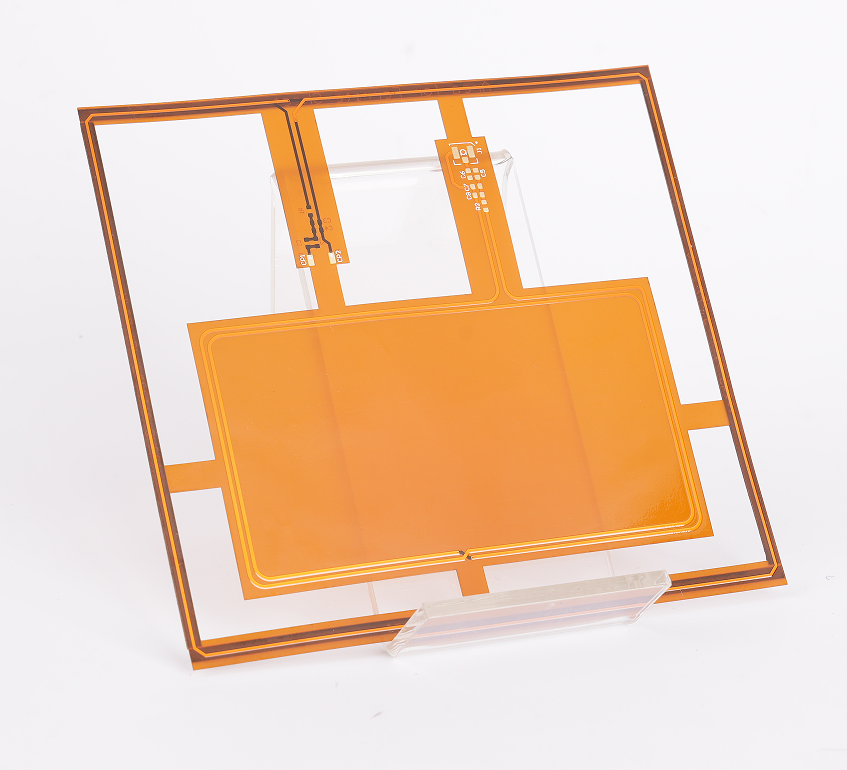Introduction of polyimide flex Proofing
Polyimide flex proofing, sometimes called flexible polyimide, is an exceptional substance recognized for its adaptability and toughness in various applications. The extraordinary thermal stability of this high-performance polymer, which is generated from polyamic acid, makes it perfect for usage in situations with high temperatures. It is a popular option in aerospace, electronics, and automotive sectors thanks to its specific qualities, including great chemical resistance, little outgassing, and outstanding electrical insulation.
Polyimide Flex Proofing: The Key to Durable and Reliable Flexible Circuitry
Electronics play a bigger role in our everyday lives in today's fast-paced technological environment. We depend on these technological advancements for communication, entertainment, and productivity, from smartphones to smart home appliances. Flexible circuitry, namely polyimide flex, is at the centre of robust and dependable flexible circuitry, which is at the heart of these modern wonders. The extraordinary material polyimide flex, commonly called flexible polyimide proofing, has completely changed how we design and produce electronic devices. Due to its special qualities, it is a crucial component in various applications, including consumer electronics, automotive, and aerospace.
1.The Basis of Flex Polyimide
Polyamic acid, a high-performance polymer renowned for its outstanding thermal stability, is the source of polyimide flex. This distinguishes it from conventional flexible materials and makes it the best choice for use in areas with high temperatures. Polyimide flex can withstand any environment, even the intense heat within a car's engine and the bitter cold of deep space.
2.Electronics at the Cutting Edge
Size and weight are more important than ever in consumer electronics. Customers want compact, lightweight gadgets that are powerful performers and fit in their pockets. In this situation, polyimide flex excels greatly. Flexible printed circuit boards (PCBs), utilized in various gadgets, including smartphones, tablets, wearable technology, and more, are crucially dependent on polyimide flex. Engineers can develop compact, space-saving gadgets using their thin, malleable nature, enabling them to make smaller, lighter devices without sacrificing functionality.

Additionally, the superior electrical insulating capabilities of polyimide flex are a game-changer. They ensure your electronic gadgets function dependably and safely by preventing short circuits and electrical interference. Imagine the aggravation of a broken fitness watch or smartphone; all of these inconveniences may be reduced due to polyimide flex's dependability.
3.Versatility and durability of Polyimide Flex
Not only is polyimide flex strong, but it is also remarkably adaptable. It is appropriate for applications where keeping a clean and stable atmosphere is essential because of its strong chemical resistance and minimal outgassing characteristics. Manufacturing aeronautical and medical equipment is particularly significant since contamination can result in disastrous failures.
Factors to think about Flexible Polyimide Proofing before buying:
Polyimide flex proofing is a crucial component to guarantee the longevity and dependability of flexible circuitry in numerous sectors. As we dig into the realm of polyimide flex proofing, let's discuss the essential variables that engineers and designers should consider while dealing with this extraordinary material.
1.Extreme Temperatures
Because of its outstanding heat stability, polyimide flex is highly valued. Because of its ability to tolerate both intense heat and cold, it is the perfect option for situations were temperature changes often. The temperature range polyimide flex will experience over its operational life must be considered while proofing the material. This covers not only the usual operating temperatures but any possible temperature increases or decreases that could occur in certain settings.
2.Mechanical Stress
Mechanical stress on flexible electronics frequently includes bending, twisting, and stretching. The polyimide flex needs to be tested by engineers to ensure it can resist these pressures without losing integrity. Proofing requires evaluating its mechanical characteristics to verify the material's flexibility and durability under various stress circumstances. This is essential for applications like flexible displays and wearable technologies, where the material must be strong and flexible simultaneously.
3.Performance Electrical
Maintaining good electrical performance is crucial in the world of electronics. Because of its superior electrical insulating capabilities, polyimide flex was chosen. It's critical to assess the material's electrical conductivity, insulating resistance, and signal integrity during proofing. For electrical equipment to operate reliably, ensuring the material complies with these specifications is crucial.
4.Dimensional stability
Over time, Polyimide Flex ought to keep its dimensional stability. It shouldn't severely stretch, shrink, or expand since this might cause component misalignment or malfunction. Testing the material's dimensional stability under various circumstances, such as temperature changes and mechanical stress, is known as proofing. This guarantees that it will keep its size and form for its useful life.
What are the benefits of polyimide flex Proofing?
Polyimide flex Proofing offers a wide range of advantages that are essential for many sectors. It strengthens product quality and lifespan, identifies weaknesses, and assures the dependability of flexible circuits—essential in aircraft and sensitive electronic systems. Additionally, it increases toughness, enabling polyimide flex to withstand high temperatures, forceful motion, and chemical exposure, prolonging the lifespan of flexible circuits and lowering maintenance costs. Proofing also improves safety by spotting and reducing possible risks to human health, which is important in applications like medical devices and automobile electronics. Proofing also improves the performance of polyimide flex, which lowers faults, waste, and production costs while raising overall manufacturing effectiveness. In conclusion, polyimide flex proofing is a crucial process that ensures flexibility, cost-effectiveness, durability, and safety in using flexible circuits, supporting technological breakthroughs in several high-tech industries.
Conclusion:
Flexible printed circuit boards (PCBs) have become a game-changing innovation in the electronics sector. They are perfect for usage in various applications, including wearable technology, medical implants, and automotive electronics, due to their flexibility and ability to bend and twist. By clearly articulating our requirements and expectations to our suppliers and including them in our quality philosophy and technical evaluation of new Flexible Printed Circuits, Best FPC builds solid, long-lasting relationships with them.










 2023-09-14
2023-09-14
 BEST
BEST

.png)
.png)
.png)
.png)

.png)

